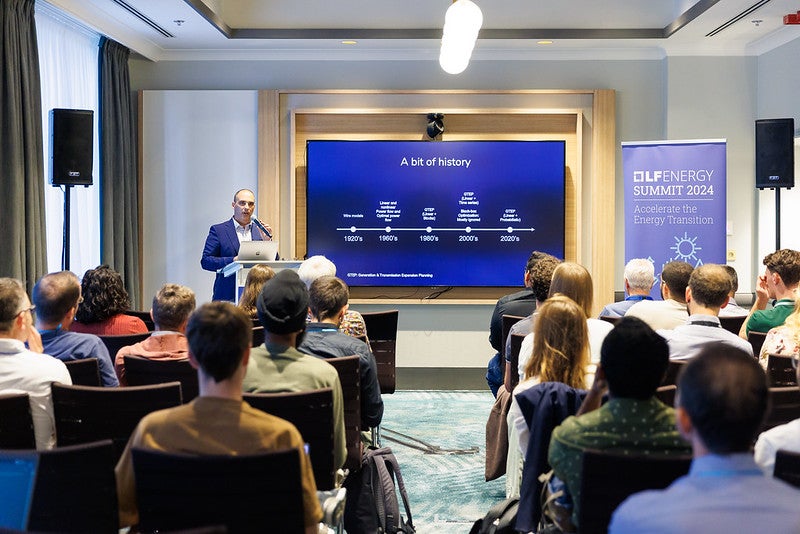LF Energy Summit Recap and Video: Vision for Power Systems Planning, the GridCal Example
LF Energy Summit 2024 in Brussels showcased exciting discussions about the future of power systems and grid technologies. One of the standout presentations was titled “Vision for Power Systems Planning, the GridCal Example” delivered by Santiago Peñate Vera, a Power Systems Engineer at Redeia, Spain’s Transmission System Operator (TSO). Santiago shared his thoughts on the current state of power systems planning and how open source tools, specifically GridCal, can revolutionize the way we approach energy infrastructure development (full video follows at the end). Here are the key takeaways:
1. The Challenges of Traditional Power Systems Planning
Santiago began by outlining the complexity of power systems planning, describing it as a process driven by technical, social, and economic factors. He pointed out that despite advancements in technology, planning methods remain somewhat stuck in the past. Today’s power systems are still largely built on techniques developed in the 1960s, with incremental improvements in algorithms but no major breakthroughs. As a result, the planning process is often inefficient, fragmented, and dependent on outdated tools like Excel, which Santiago humorously but firmly reminded the audience, is “not a database.”
2. The Fragility of Scenario Analysis
Santiago highlighted the inherent fragility of scenario-based planning. Even small changes in input data can dramatically alter the results, making it difficult for planners to trust or depend on these outcomes. He argued that this reliance on fragile models leads to inefficient planning and sometimes flawed decisions. A more robust and antifragile approach, one that can improve and adapt when failures occur, is necessary for the future of power systems.
3. The Open Source Solution
According to Santiago, open source software is a key way out of the bottlenecks and inefficiencies that plague current power systems planning. He emphasized that open source tools foster innovation and collaboration, breaking down barriers and allowing both academia and industry to contribute to better solutions. GridCal, the software developed by Santiago, is a prime example of this philosophy. Designed to be free and open source, GridCal empowers engineers and researchers to tackle complex power system challenges, offering flexibility, customization, and community-driven improvements.
4. The Do-It-Yourself (DIY) Trap
Santiago shared a cautionary tale from his early career, explaining how he nearly fell into the DIY trap when he attempted to build power flow software from scratch. He noted that many engineers, frustrated by commercial software limitations, embark on building their own tools, only to find themselves locked into a complex, expensive, and time-consuming process. His message was clear: while innovation is necessary, it must be done in a sustainable and collaborative way to avoid the pitfalls of vendor lock-in or endlessly reinventing the wheel.
5. Planning for the Future: R&D and Open Source
One of Santiago’s strongest points was the need for increased R&D in the energy sector, especially as the grid faces more challenges with integrating renewables and decentralized energy resources. Open source software like GridCal can play a critical role in enabling the R&D efforts necessary to meet these challenges. By reducing the reliance on proprietary tools, open source platforms allow for faster innovation and more scalable solutions.
